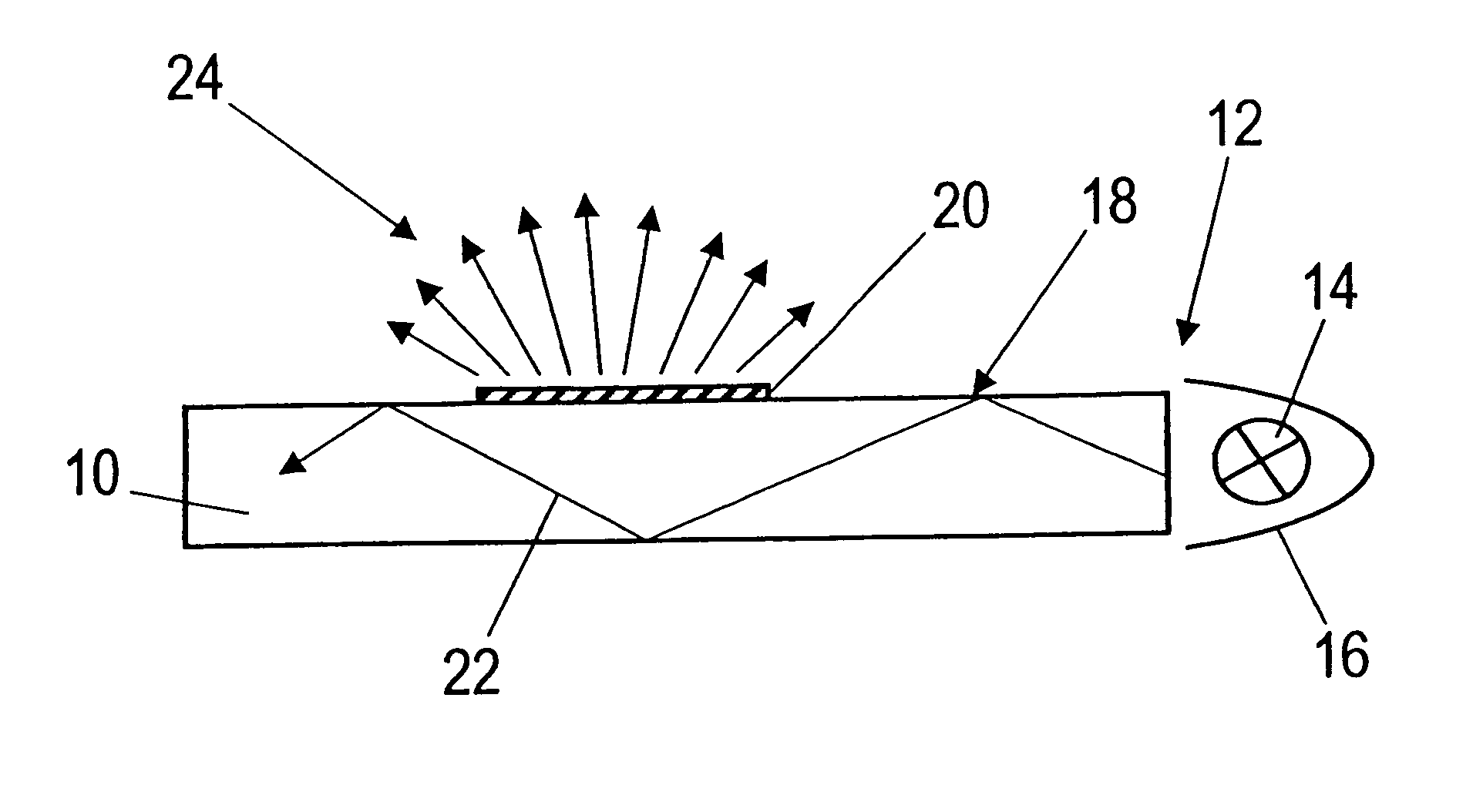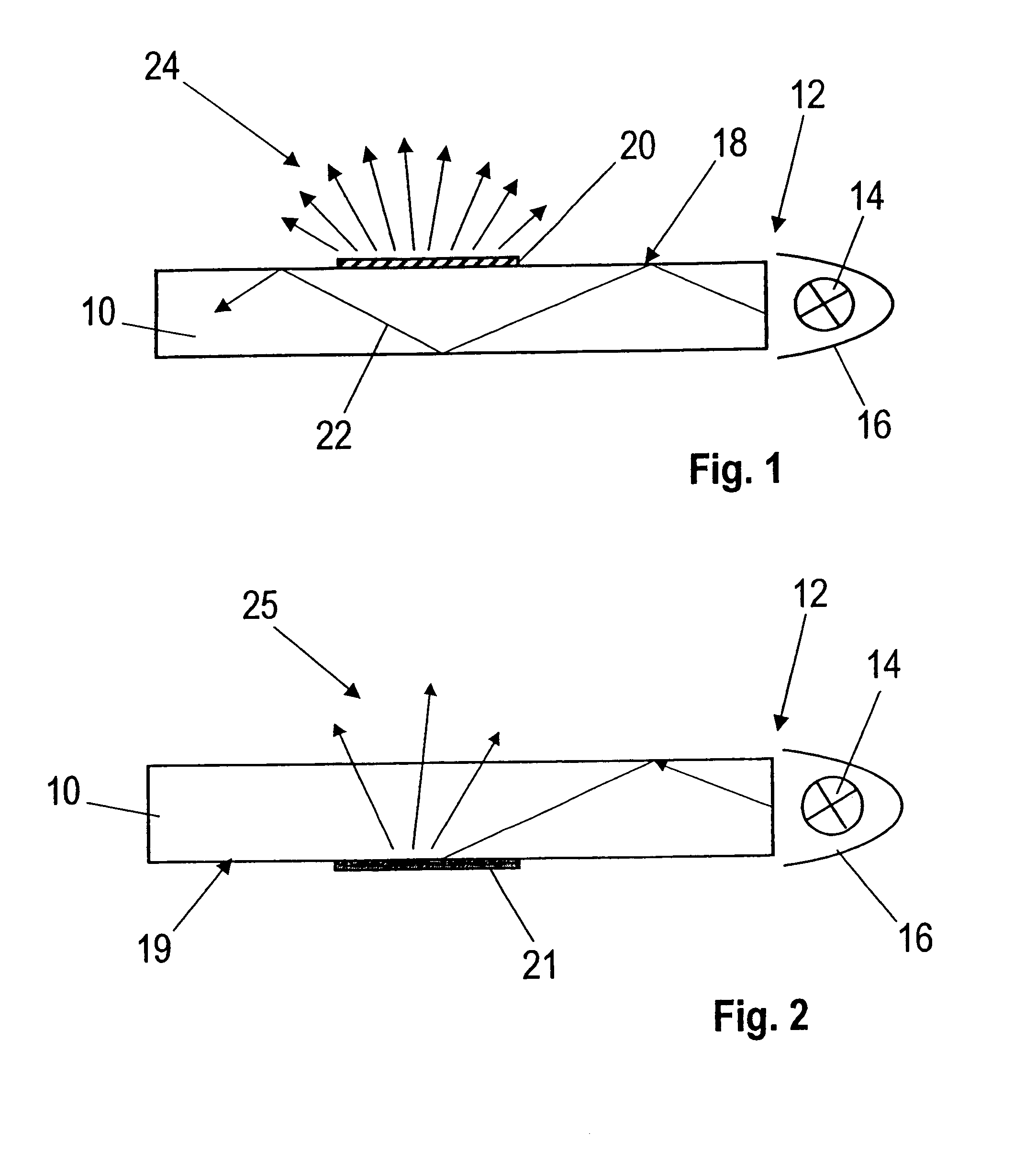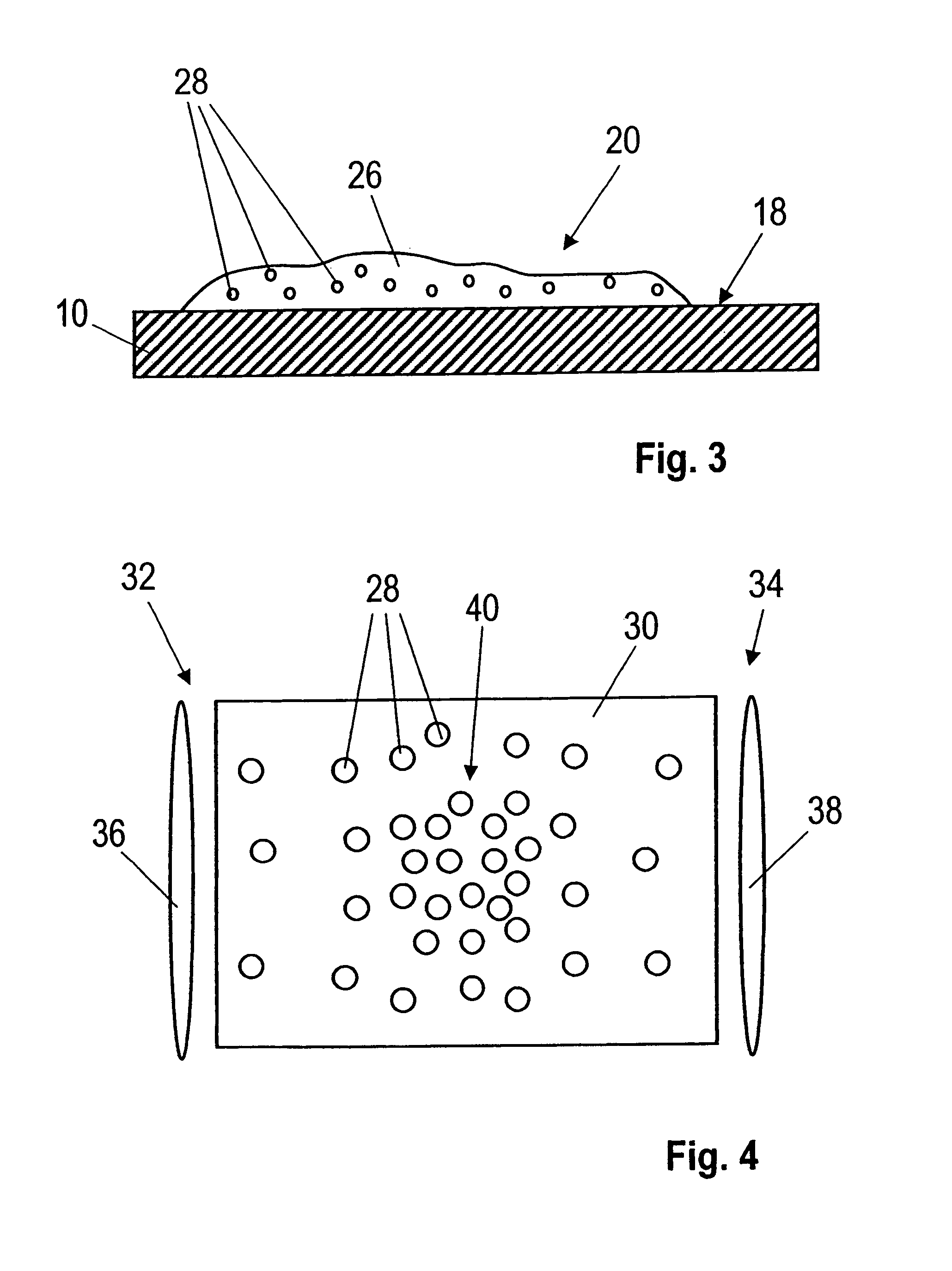Method for producing light-scattering structures on flat optical waveguides
a technology of optical waveguides and light-scattering structures, which is applied in the direction of optics, instruments, optical light guides, etc., can solve the problems of high cost, high cost, and high cost of known etching and lithographic methods, and achieves the effect of high cost, high cost, and high cos
- Summary
- Abstract
- Description
- Claims
- Application Information
AI Technical Summary
Benefits of technology
Problems solved by technology
Method used
Image
Examples
Embodiment Construction
[0030]A plate 10 made of glass or a transparent plastic material is shown in a schematic plan view and in section in FIG. 1, having a right edge area 12 in which the light from a lamp 14 is coupled. A mirror device 16 is arranged at the lamp 14, which focuses the light from the lamp 14 to the edge area 12 and shades the space facing away from the optical waveguide 10. A light-scattering structure 20 is attached to the upper outer surface 18 of the plate 10, wherein the light is coupled out toward the top. The coupled-in light 22 is conducted inside the plate 10 by total reflection. The light is coupled out of the plate 10 acting as an optical waveguide in the form of scattered light 24 at the light-scattering structure 20.
[0031]FIG. 2 shows a similar arrangement where one difference from the arrangement shown in FIG. 1 is that a light-scattering structure 21 is attached to the lower outside surface 19 of the plate 10. In this case, the light is coupled out upward from the plate 10 a...
PUM
 Login to View More
Login to View More Abstract
Description
Claims
Application Information
 Login to View More
Login to View More - R&D
- Intellectual Property
- Life Sciences
- Materials
- Tech Scout
- Unparalleled Data Quality
- Higher Quality Content
- 60% Fewer Hallucinations
Browse by: Latest US Patents, China's latest patents, Technical Efficacy Thesaurus, Application Domain, Technology Topic, Popular Technical Reports.
© 2025 PatSnap. All rights reserved.Legal|Privacy policy|Modern Slavery Act Transparency Statement|Sitemap|About US| Contact US: help@patsnap.com



